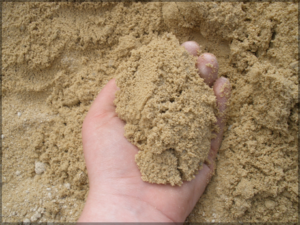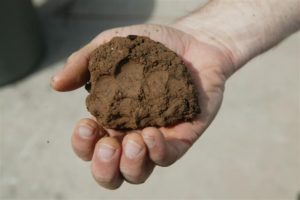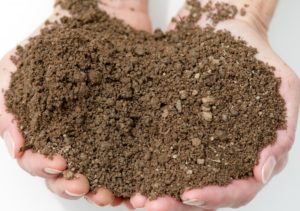Water Wise It ™ – Creating a Water-Wise Lawn!
Which type of soil offers the most balanced profile for water filtration and retention on a lawn?
In Utah there are three basic soil profiles; Sand, Sandy Loam and Clay. To figure out what type of soil you have do a quick spit test. Take a hand full of soil, spit into it (or just add some water), and mix the water in with your finger. If the soil resists balling up it is probably sandy soil. If the soil creates one big ball of mud it is likely Clay. If the mixture creates several little balls of mud it is sandy loam. Sandy Loam is the most desirable type of soil, because it retains water and resists compaction (compaction prevents moisture from filtering down through the soil). Sandy loam consists of the three materials found in soil: clay, sand, and silt. Sandy loam in contains approximately 25% clay, 50% sand, and 25% silt. Sandy loam provides the best balance of water drainage, water retention, resists compaction and allows Air, Water, and Nutrients easier access to roots.
Clay affects soil the most as it affects compaction, infiltration, and drainage depending on the amount present in the soil. Too much clay in soil will inhibit internal drainage, while too little clay will prevent the soil from holding water long enough to be absorbed. Non-compacted soil will allow turf grass sod to more easily establish deep root systems and will increase the overall health of your lawn.



If you have a different kind of soil don’t despair, it’s an easy fix to modify your soil before planting. Prepare your soil bed 6-8″ with Sandy Loam Soil before planting a lawn or laying sod. You can modify a current soil profile by adding fully composted material to the soil. Worms and bactifeed can also help to break down and modify soils. Most hardware stores and nurseries carry soil test kits. You can use these to determine the actual composition of your soil. These soil tests also identify what nutrients are needed for proper turfgrass health. Anyone can develop an excellent lawn with the addition of organic matter, fertilizer, and proper soil preparation.
After you’ve modified your soil be sure to pre-water before installing sod! This not only settles the soil but it’ll help establish a healthy lawn and will require less water to establish the sod.
If you have specific questions about soil composition and how it affects your lawn please contact Chanshare Farms by emailing sales@chanshare.com or by calling 866-SOD-EASY.

It’s great to learn that you should pre-water your soil before installing sod. My wife and I are moving into a house with a backyard soon and we were wondering how sod should be installed. I’ll be sure to tell her that our soil should be pre-watered before you install the sod.